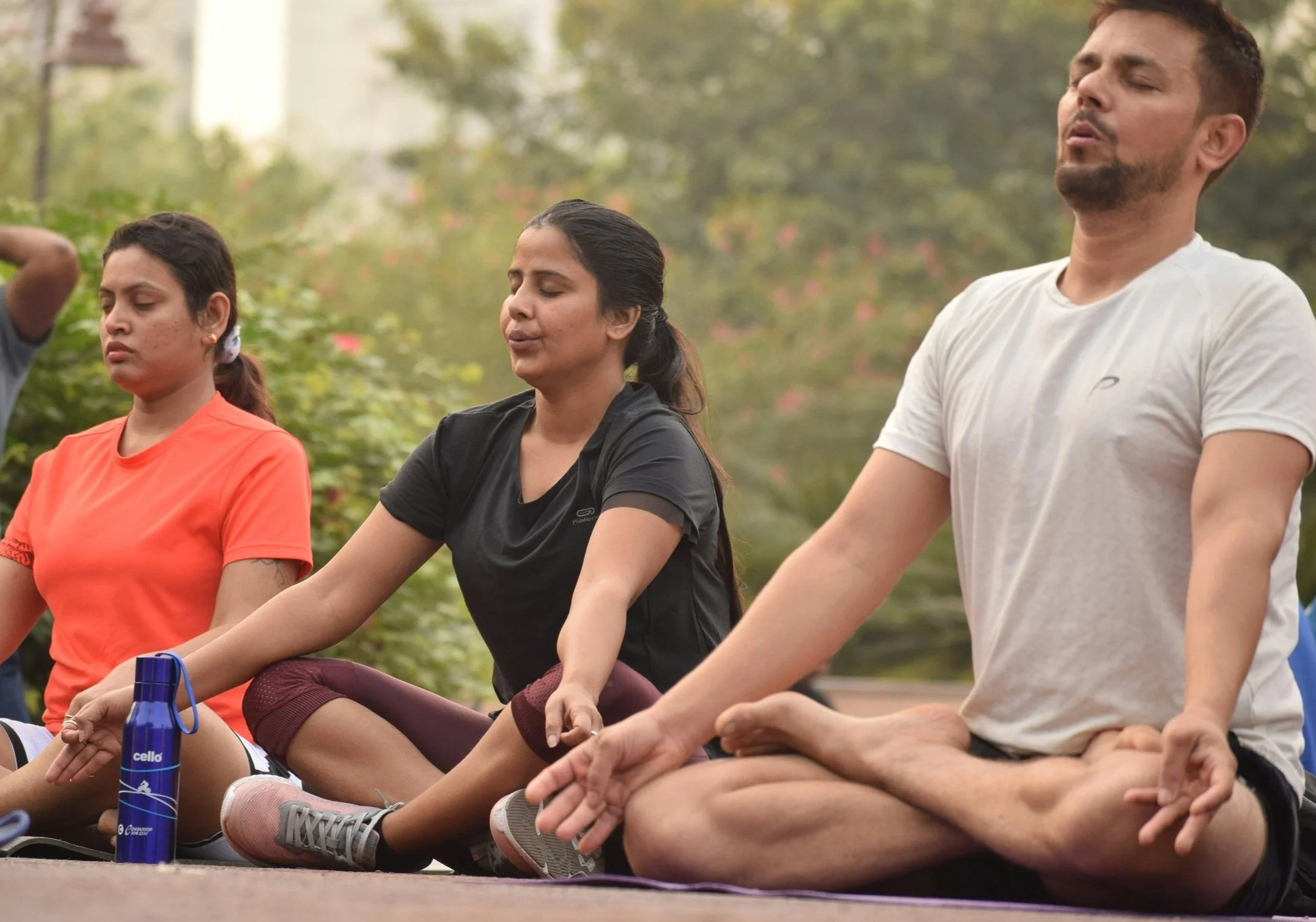Unlock the Power of Meditation: Techniques for Every Lifestyle
Meditation has long been recognised as a powerful tool for enhancing mental clarity, emotional stability, and overall well-being. Yet how often do I hear, “I’ve tried to meditate, but I can’t switch off my brain,” or “I’m always too busy,” or “I can’t sit still for even 10 minutes”?
These concerns are common, but they don’t have to stop you from discovering the transformative benefits of meditation.
The truth is that our minds are naturally resistant to stillness, particularly in today’s fast-paced world. However, with the right approach, you can break through these barriers and unlock a calmer, more focused, and resilient version of yourself.
In this article, we’ll explore the health benefits of meditation and various techniques (including options for those who struggle to sit still), and provide practical tips to help you begin. By the end, you’ll have all the information you need to select the right meditation practice for your lifestyle and make it a life-changing habit.
The Science-Backed Health Benefits of Meditation
Meditation is not just a spiritual or relaxation practice – it is a scientifically backed method that can significantly improve mental and physical health. Studies show that meditation can:
Reduce blood pressure and improve cardiovascular health
Regular meditation has been found to lower stress hormones (e.g., cortisol), which in turn helps reduce blood pressure and decreases the risk of heart disease, stroke and metabolic disorders.Boost the immune system
By lowering stress, meditation strengthens the body’s immune response, making you less vulnerable to illness.Ease anxiety and depression
Meditation promotes mindfulness, helping you to be more present and focus away from negative thought patterns, which can reduce feelings of anxiety and depression over time.Improve focus and clarity
Consistent meditation sharpens attention, making it easier to handle daily tasks with less distraction.Enhance emotional well-being
By encouraging a sense of calm and mindfulness, meditation helps you react more thoughtfully to stress and cultivates a deeper sense of peace.
Taking just a few minutes each day to meditate can unlock significant improvements in your physical, mental, and emotional health. But consistency is essential.
How to Build a Sustainable Meditation Routine
One of the most common mistakes people make when starting to meditate is setting unrealistic goals. Meditating for an hour daily may sound great on paper, but life often gets in the way, and it may be too difficult to benefit from this type of exercise because you have not yet trained your brain.
Instead, start small – even just 5-10 minutes a day can make a huge difference.
Here are a few tips for developing a sustainable practice:
Start with short sessions
Begin with 5 or 10 minutes, either in the morning or before bed. Gradually increase the time as you become more comfortable.
Create a quiet space
A peaceful environment will help you focus. You don’t need a special meditation room – find a quiet corner with minimal distractions. Ensure you are (and it feels) comfortable. Aim not to be disturbed — switch off electronic devices.Be kind to yourself
Meditation isn’t about doing it perfectly. Your mind will wander, and that’s completely normal. The more you practice, the better you will be at it. When it does, gently return your attention to your breath or focal point.Consistency matters more than length
Regular, short meditations are more effective than sporadic long sessions. The key is to make meditation a daily habit, even for a few minutes.
Consistent practice will soon improve your clarity, focus, and overall well-being. So give it a try and establish habits that will stick.
Meditation Techniques for Every Personality and Lifestyle
Meditation is not a one-size-fits-all practice. Countless techniques are available, each suited to different needs, preferences, and challenges. If sitting in silence feels impossible, don’t worry – there’s a technique for you.
1. Shamatha Meditation (Calm Abiding Meditation)
Shamatha, which translates as “calm abiding,” is a simple yet profound meditation technique from Tibetan tradition. The practice involves focusing on your breath to access a state of tranquillity and mental clarity. As thoughts arise, you gently return your attention to the breath. Over time, the space between thoughts increases, leading to deeper inner peace and clearer thinking.
Best for:
Individuals seeking mental clarity and calm
Beginners looking for a simple introduction to meditation
Focus on your breath and gently remove unwanted thoughts
2. Mindfulness Meditation (Vipassana)
Mindfulness meditation centres on being fully present, without judgement. You observe your thoughts, bodily sensations, and surroundings without reacting. This practice can be done while sitting, walking, or even during everyday activities like eating or cleaning.
Best for:
Those who struggle to find quiet time
Individuals who prefer active, moving meditations
Be present, analyse how your feel, the tensions in your body, and focus on your breathing.
3. Guided Meditation
Guided meditation may be the best option if you struggle to sit still or quiet your mind. A teacher (or recorded guide) leads you through the practice, often using visualisation or relaxation exercises to help you focus. Many apps propose free or subscriptions for guided meditation.
Best for:
Beginners who need more structure
Those who struggle with maintaining focus
Guided meditation. Being part of a group can help you with the basics of meditation.
4. Walking Meditation
Walking meditation offers a great alternative for those who can’t sit still for long periods. This method allows you to cultivate mindfulness while moving. Focus on your breath, the sensation of your feet touching the ground, and the sights and sounds around you as you walk.
Best for:
People with restless energy
Those who want to incorporate meditation into their daily routine
Walking meditation: Focus on your breath, the world around you and, in this case, the salty breeze, the sand under your feet, and how it makes you feel
5. Mantra Meditation
In mantra meditation, you silently repeat a word, phrase, or sound (a mantra) to yourself. The repetition helps to quiet the mind and deepen your focus. It’s an excellent method for individuals who struggle to concentrate on their breath or find themselves easily distracted.
Best for:
Those who need something specific to focus on
Individuals seeking a spiritual connection through meditation
Humming, chanting, repeating mantras or praying are forms of meditation
Can’t Sit Still? Try These Quick SOS Meditations
If you’re constantly on the go and find it difficult to sit still for extended periods, I’ve created 5-minute SOS meditation sessions that you can easily access on my YouTube channel.
These short, guided meditations help you quickly reset your mind at home, work, or on the move. You can calm your mind and reduce stress in just five minutes, – no long meditation sessions.
Each session has a clean edit (no disrupting sound), with nature sounds or binaural waves for quicker brain wave shift.
Check out my 5-minute meditations here!
Ready to Start Your Meditation Journey?
No matter your personality, lifestyle, or schedule, there’s a meditation technique that’s right for you. Begin small, be consistent, and explore different methods to discover what resonates with you.
Remember, the goal of meditation isn’t to stop your thoughts, but to step back from them, helping you gain clarity, peace, and resilience in your everyday life.
By dedicating just a few moments each day to meditation, you will experience a positive impact on every area of your life — from improved health and focus to a deeper sense of well-being.
Now, it’s time to choose the technique that speaks to you and make meditation part of your daily routine!
Do not forget, mindfulness is not only a tool to help you meditate, but an exercise to keep you grounded and in the moment, including during meal times. You must be in a state of “Rest-and-Digest” for your body to break down and assimilate the nutrients from the food you eat. Become a mindful eater. This can be the first step in helping you focus and help you start meditating.





